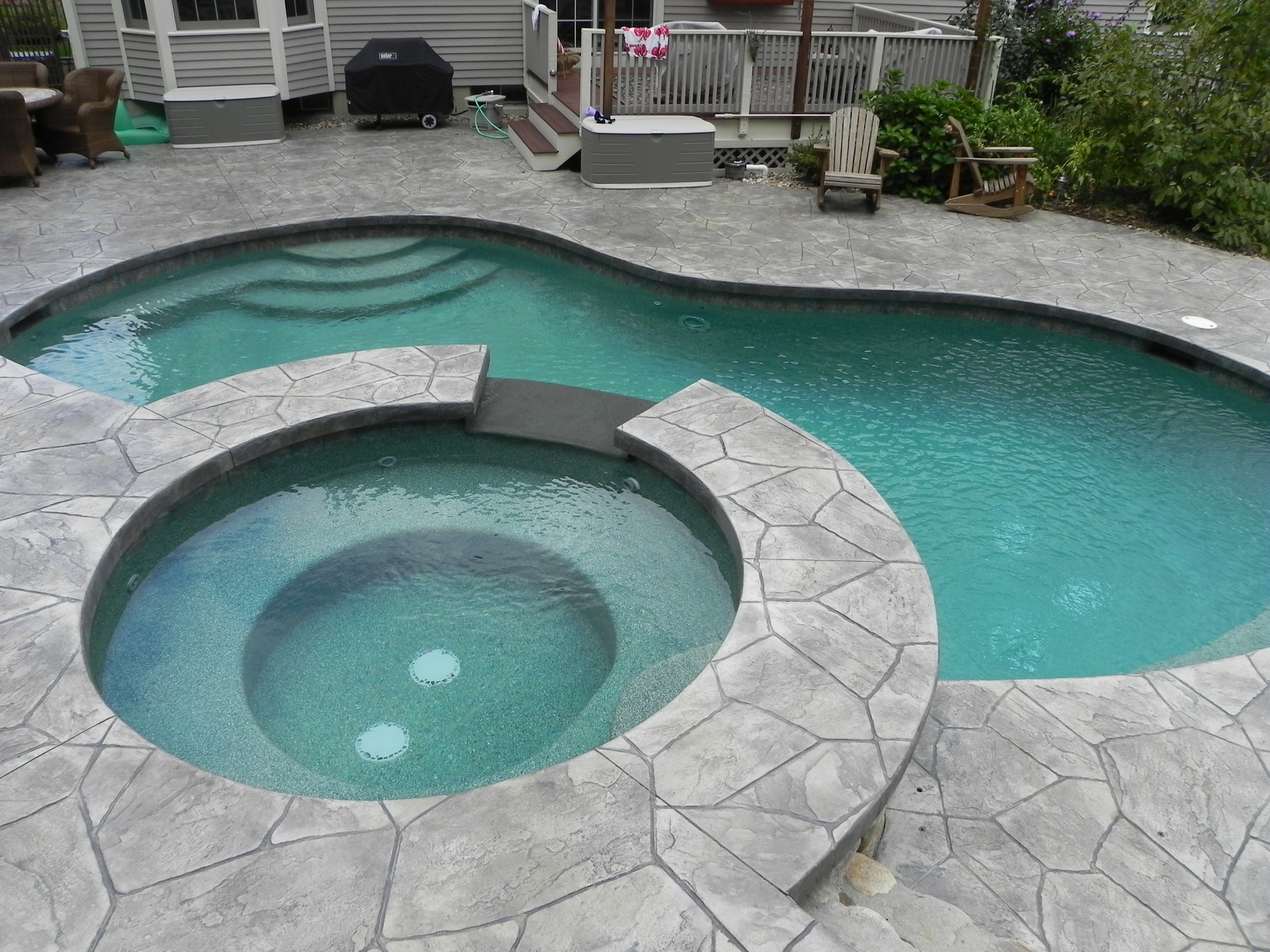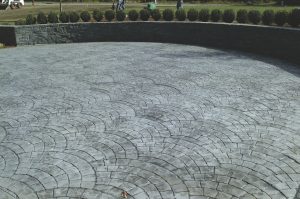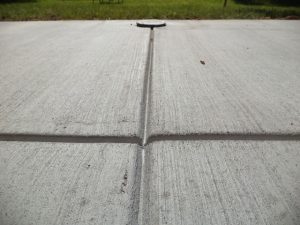
When planning a concrete project, choosing the right type of concrete is crucial for achieving your desired aesthetic and functionality. Stamped concrete and regular concrete are two popular options, each with distinct advantages and applications. The experts at Triad Associates can help you explore the benefits, uses, and differences between stamped concrete vs. regular concrete to help you make the best choice for your project, and then they can design and install your project expertly for many years of enjoyment.
What is Stamped Concrete?
Stamped concrete is a decorative concrete finish that mimics the appearance of materials like brick, stone, slate, or wood. Achieved by imprinting patterns into the surface of freshly poured concrete, stamped concrete is often combined with color enhancements to create a striking and customized look.
Benefits of Stamped Concrete
There are many benefits to stamped concrete to consider, no matter what type of hardscaping project you have in mind. These include:
- Visual Appeal: Stamped concrete offers a high-end, luxurious appearance at a fraction of the cost of natural materials.
- Customization: Stamped concrete comes in a wide variety of patterns, colors, and textures to suit any design preference. You can even mimic other, high-end materials.
- Durability: Stamped concrete provides the strength of concrete with the added benefit of being less prone to cracks compared with individual pavers.
- Low Maintenance: Stamped concrete requires occasional sealing to preserve its look, but it is otherwise easy to maintain.
 Common Applications of Stamped Concrete
Common Applications of Stamped Concrete
Stamped concrete can really be used for just about any hardscaping project. However, it is an especially popular choice for patios, walkways, pool decks, driveways, and outdoor living spaces. It can elevate the look of large spaces.
What is Regular Concrete?
Regular concrete, also known as plain or standard concrete, is a basic mixture of cement, water, and aggregate. While it lacks the decorative elements of stamped concrete, it is prized for its versatility, strength, and cost-effectiveness.
Benefits of Regular Concrete
Regular concrete is very popular because it offers a number of benefits. These include:
- Affordability: Regular concrete is typically less expensive than decorative options, making it ideal for large-scale projects.
- Versatility: Standard concrete can be used for a wide range of applications, from structural work to flatwork surfaces. It can fit into any form and take any shape.
- Durability: Regular concrete withstands heavy loads and environmental wear, making it a reliable choice for high-traffic areas.
- Ease of Maintenance: Standard concrete requires minimal upkeep and can last for decades with proper care. It doesn’t even have to be sealed.
Common Applications of Regular Concrete
R egular concrete can be used for any hardscaping project. However, it is widely used for sidewalks, driveways, foundations, retaining walls, and industrial floors. It can be dressed up with different colors and finishes, such as a broom finish or polish, or it can be used with no embellishment.
egular concrete can be used for any hardscaping project. However, it is widely used for sidewalks, driveways, foundations, retaining walls, and industrial floors. It can be dressed up with different colors and finishes, such as a broom finish or polish, or it can be used with no embellishment.
Stamped Concrete vs. Regular Concrete: Key Differences
When choosing between stamped concrete vs. regular concrete, understanding their differences in cost, installation, maintenance, and longevity is essential. Each option has unique qualities that make it more suitable for specific applications and preferences.
Cost Comparison
Stamped concrete is generally more expensive due to the additional labor and materials required for patterns and coloring. It offers a high-end look at a lower cost than natural stone or brick. Regular concrete is more affordable, making it ideal for large-scale or functional projects where aesthetics are not the priority.
Installation Process
Stamped concrete requires a more intricate process, including pouring, leveling, imprinting patterns, and applying color. This increases labor time and costs but results in a decorative finish. In contrast, regular concrete requires a simpler process involving pouring, smoothing, and curing, which makes it faster and less expensive to install.
Maintenance and Longevity
Stamped concrete requires periodic sealing to preserve its color and protect against wear and weathering. Its decorative surface may be more prone to minor chips and cracks. Regular concrete is easier to maintain with occasional cleaning and sealing. It tends to last longer in heavy-use areas due to its simple, durable surface.
Pros and Cons: Stamped Concrete vs. Regular Concrete
When comparing stamped concrete vs. regular concrete, there are pros and cons to consider.
Analyzing these factors can help you better decide which would be right for your project. Getting advice from the professionals at Triad Associates can also help you choose the right materials for long-term success.
Pros of Stamped Concrete
- Highly customizable with a wide range of patterns, textures, and colors
- Mimics the look of expensive materials like stone and brick at a fraction of the cost
- Adds significant curb appeal and visual interest to outdoor spaces
Cons of Stamped Concrete
- More expensive than regular concrete
- Requires regular sealing to maintain its appearance and protect against damage
- Installation is more labor-intensive, which can increase project timelines
Pros of Regular Concrete
- Cost-effective for large projects or functional applications
- Durable and long-lasting, withstanding heavy loads and harsh weather
- Easy and quick to install, reducing labor costs and time
Cons of Regular Concrete
- Limited aesthetic appeal compared to stamped concrete
- Can crack or stain over time if not properly maintained
- Lacks the customization and decorative options offered by stamped concrete
Which Option is Right for You?
Choosing between stamped concrete vs. regular concrete depends on your priorities for the project. If you’re looking for a visually stunning and unique finish to elevate your outdoor space, stamped concrete is an excellent choice. However, if functionality, budget, and durability are your primary concerns, regular concrete is a practical and reliable option. But you can’t go wrong with either choice.
Work with Triad Associates’ Concrete Experts
No matter your preference between stamped concrete vs. regular concrete, Triad Associates is here to guide you through every step of your concrete project. With years of expertise in stamped and regular concrete installations, we help you achieve the perfect balance of style, functionality, and affordability. We have earned a reputation for our exceptional results and superior service. Contact our team today to schedule a consultation and bring your vision to life with the best concrete solutions!




